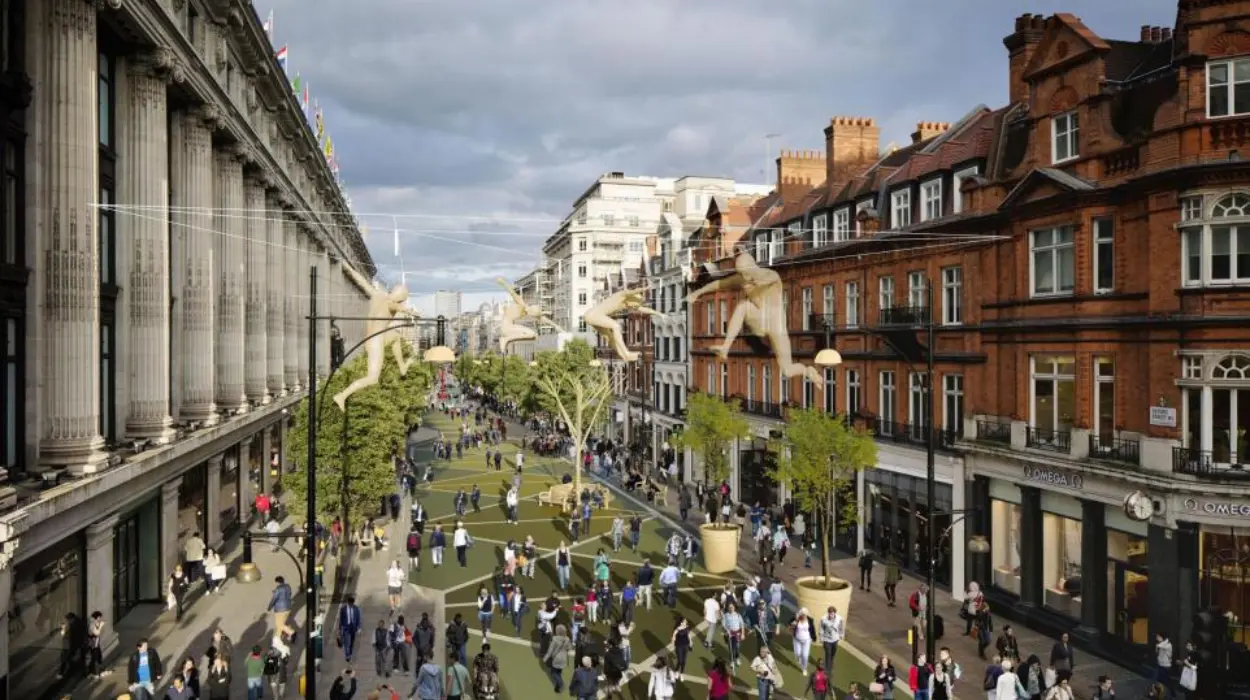City of Westminster (Parliament Politics Magazine) – Andrew Boff claims Oxford Street residents in Westminster are increasingly concerned about pedestrianisation plans, citing fears over disruption and access.
People who live close to Oxford Street are “unanimously against” the mayor’s proposals to pedestrianize the area, according to a Conservative politician.
In order to improve the area and create a “world-class public place,” Sadiq Khan has suggested prohibiting traffic from the busy commercial street.
He wants new planning powers to transfer control of the roadway and a few nearby roads from Westminster City Council to a Mayoral Development Corporation (MDC) in order to realize his vision.
Locals are less enthusiastic about pedestrianization than tourists, according to Andrew Boff, head of the London Assembly planning and regeneration committee.
“Everybody who doesn’t live in the area of central London thinks pedestrianisation is a really good idea because they don’t live there,”
he claimed.
“But if you live in the area, you realise the practical challenges that there are. Residents are pretty much unanimously against the Mayor’s plans.”
Residents frequently worry that plans do not adequately take into account their requirements or the practical implications for day-to-day living, and they frequently feel excluded from decision-making.
Longer commutes, trouble navigating streets, a lack of benches or rest areas, and shoddy pedestrian infrastructure are among the issues.
Although Oxford Street is one of the busiest shopping districts in the world, the mayor claims that the pandemic and the rise in internet shopping have negatively impacted it in recent years.
He argues that by making the area a more inviting place for customers to buy, pedestrianization promotes consumer spending.
First, the area between Marble Arch and Orchard Street would be pedestrianized; limitations would then be implemented further east, towards Tottenham Court Road.
According to Mr. Boff, residents were worried about the potential rerouting of traffic and cyclists in the event that Oxford Street was closed off.
“If you stand on nearby Wigmore Street and imagine 35 bus routes going down there, it’s difficult to see how it is going to manage,”
he explained.
“It’s also difficult to see whether or not there is an alternative route that is convenient for cyclists if they are banned.”
If the Mayor’s plans were to go ahead, it is likely that taxis would also have to pick up or drop off passengers in side streets.
“We want to see what plans there are for ensuring that disabled and elderly people are going to be able to access those stores on Oxford Street,”
Mr Boff said.
The planning chair also questioned whether creating new planning powers to bring about changes to Oxford Street was “overkill”.
“Does the Mayor need to put in a Mayoral Development Corporation to achieve this?” Mr Boff added.
“Residents pointed to the fact that progress has taken place over the past few years working with the council and TfL – the pedestrian area has increased, and more social areas introduced.
We want to see from the Mayor how he will liaise with residents in the future when an MDC is in. It’s very important that those voices are heard.”
The Mayor would appoint two-thirds of the MDC’s twelve members, with Westminster City Council nominating the other three and Camden Council nominating one.
Westminster City Council has stated that it will “seek to work pragmatically” with Sadiq Khan to secure a “bright future for the nation’s high street,” while Camden Council has supported the Mayor’s intentions.
A response has been requested from the mayor’s office. The first ideas for pedestrianizing Oxford Street are up for feedback until this Friday, May 2.
What specific fear do locals have about pedestrianisation affecting their daily lives?
Pedestrianization frequently reroutes vehicles to nearby streets, raising concerns about increased traffic, longer travel times, and trouble driving to houses or places of business.
Businesses and locals worry that limiting automobiles on pedestrian-only routes will make it more difficult to carry goods, collect trash, provide emergency access, and provide other necessary services.
Locals may worry about increasing risks on nearby roads with more traffic, as well as possible conflicts between pedestrians and delivery vehicles or cyclists, even if pedestrian zones can increase safety within them.
If parking is eliminated or vehicle access is restricted, elderly residents, individuals with disabilities, and persons with mobility issues may be afraid of having less access or having to travel farther.
Some worry that pedestrianization could hurt local businesses and services by discouraging customers who depend on cars.


